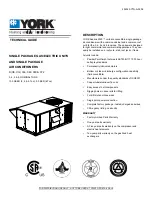
EN - 15
EN
3-4. Tubing airtightness test and vacuum application
An airtightness test is required for gas heat pump A/C as part of industry installation guidelines. Follow the
procedure below to perform the test and con
fi
rm there is no leakage from any connections.
Connect the manifold gauge to both service ports - on the wide tube side and narrow tube size. Then
connect the nitrogen tank, vacuum pump, and other items as shown in Fig. 18.
Connect an R410A control valve (Schrader valve) at the service port for the shut-off valve.
If an R410A control valve (Schrader valve) is not connected, it may cause a frost burn due to refrigerant
leaking when the charge hose is removed.
Use nitrogen to raise the pressure to the airtightness test pressure (4.15 MPaG)
and con
fi
rm that there is no leakage.
Refrigerant leakage can cause suffocation and injury to nearby persons.
Fig. 18
Gas tube
Liquid tube
Pressure gauge
Pressure reducing valve
Siphon tube
Nitrogen
When checking for air/vacuum tightness, do so at all service ports at the same time. (With all the valves to
the outdoor units closed.)
Always use nitrogen when performing air tightness checks.
(Oxygen, carbon dioxide or refrigerant may not be used)
When performing air tightness checks on the tubes between indoor/outdoor units, we recommend doing so
on the tubes independently, prior to connecting outdoor units.
After the airtightness test is completed, apply vacuum of 667 Pa (-755 mmHg, 5 Torr) or below to the
indoor unit and tubing.
Do not leave for a long period of time after the vacuum state has been reached.
There is a check valve at each service port.
* With a 3-way multi system, there will be 3 tubes. Treat each of the tubes in the same way.
Vacuum pump
Weight scale
Refringerant
container
R410A
00-Installation̲All.indb 15
00-Installation̲All.indb 15
2012/09/07 9:32:41
2012/09/07 9:32:41







































